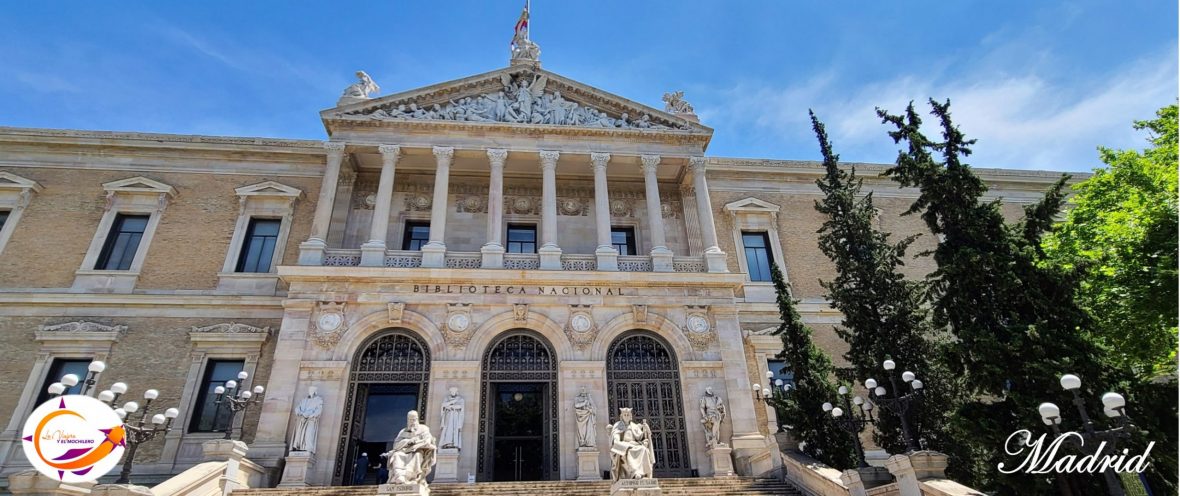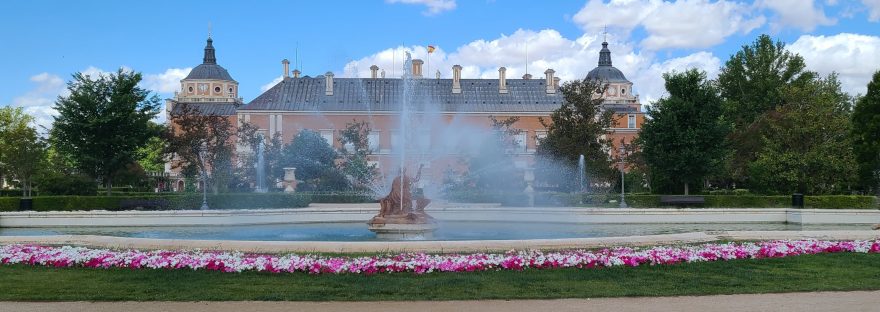Inspired by the French gardens of the time, the engineer Esteban Marchand in 1727, create the “El Parterre” or The Flowerbed of the Royal Palace of Aranjuez. It is located next to the eastern facade of the Royal Palace of Aranjuez. The floral decoration of the garden was the work of the French gardener Esteban Boutelou, who completed the work in 1736. It is considered one of the few examples of French classical gardening in Spain.
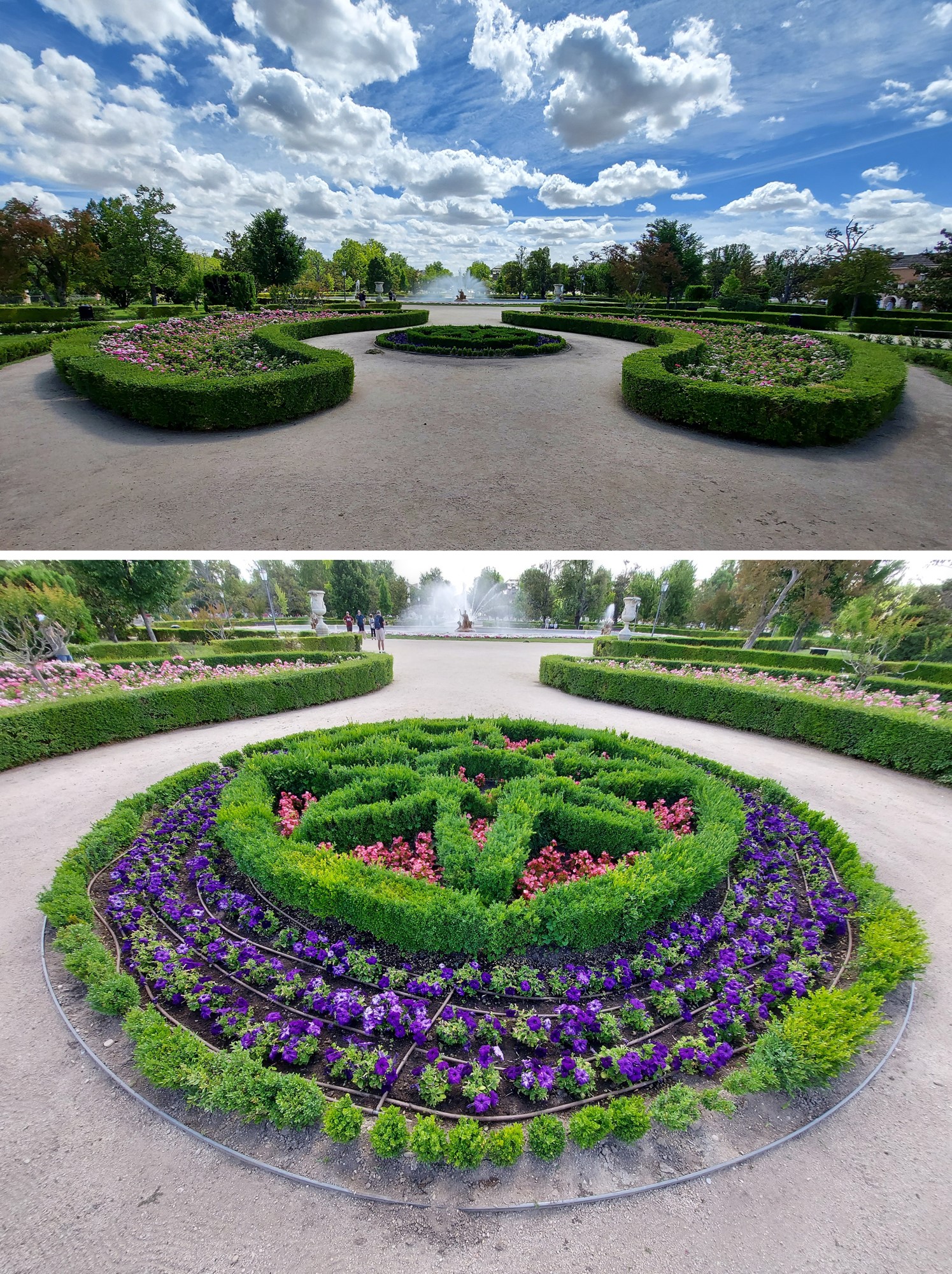
The “Parterre” not only enjoys the colors, the beauty and scents of the flowers, jointly with all the symmetry and organization that are arranged, but also three beautiful fountains that bear the names of Hercules and Antaeus, Ceres and Nereids.
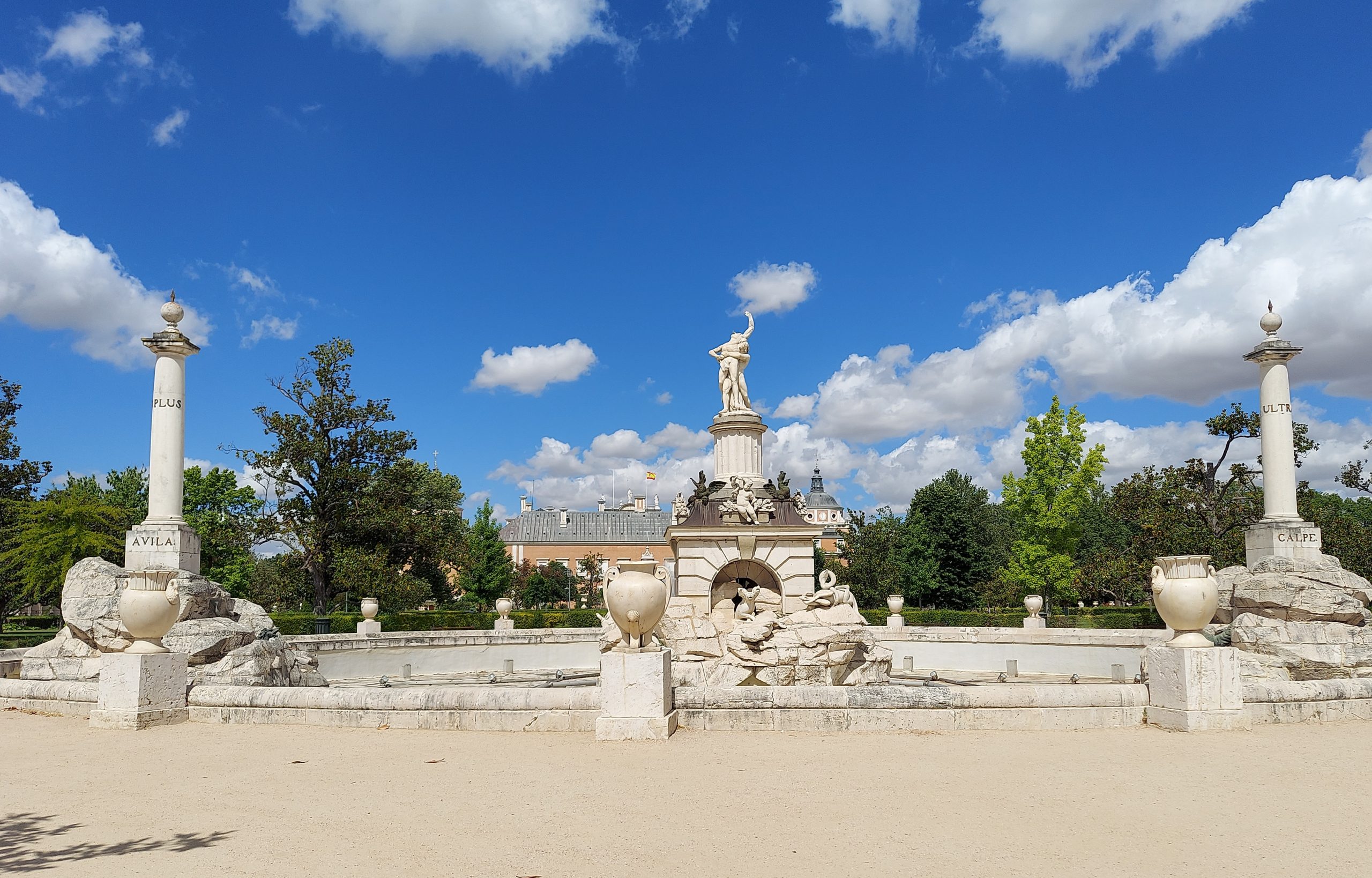
Our tour through the Parterre of Aranjuez began by contemplating the Fountain of Hercules and Antaeus which, due to its monumentality, does not escape the eye in any way. It represents Hercules holding tightly to the giant Antaeus before crossing the garden of the Hesperides.
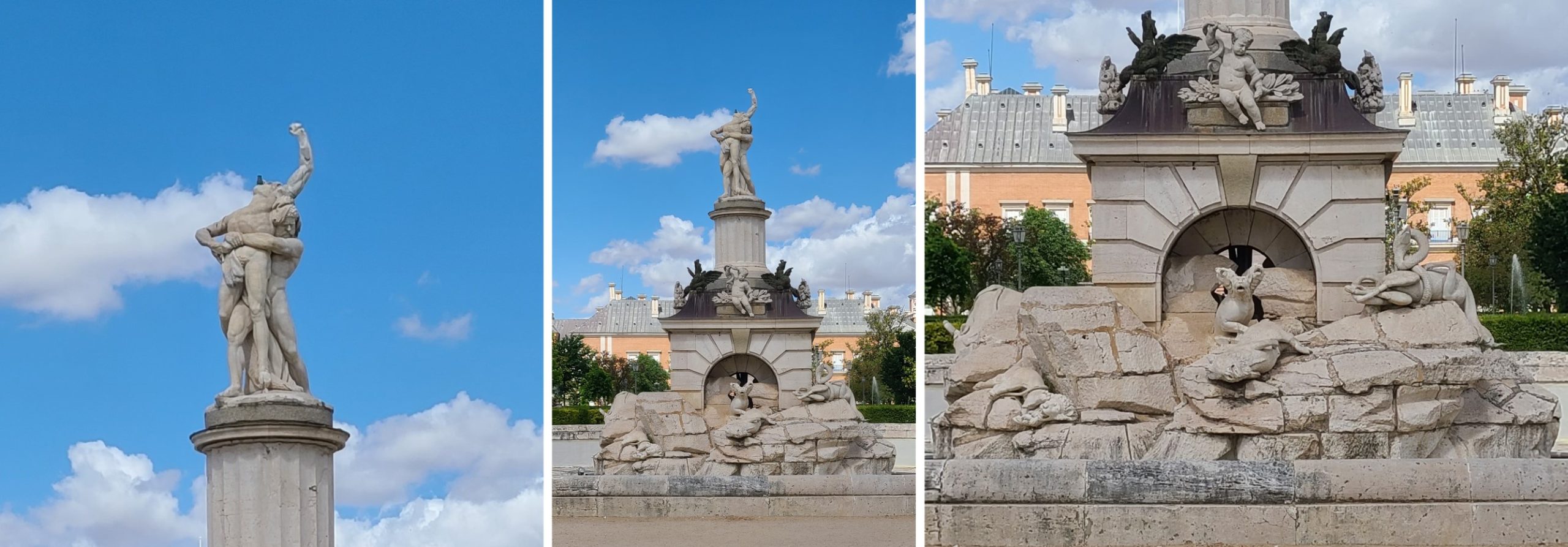
The construction of this fountain began during the reign of Charles IV and in 1807 it was practically finished. However, It was not until 1827 when it was installed in the place previously occupied by a fountain dedicated to the Tagus River. Its architect was Isidro González Velázquez and the sculptures, in neoclassical style, were sculpted by Juan Adán. It consists of three sculptural groups within the same pond. The central group culminates in the sculpture of Hercules and Antaeus.
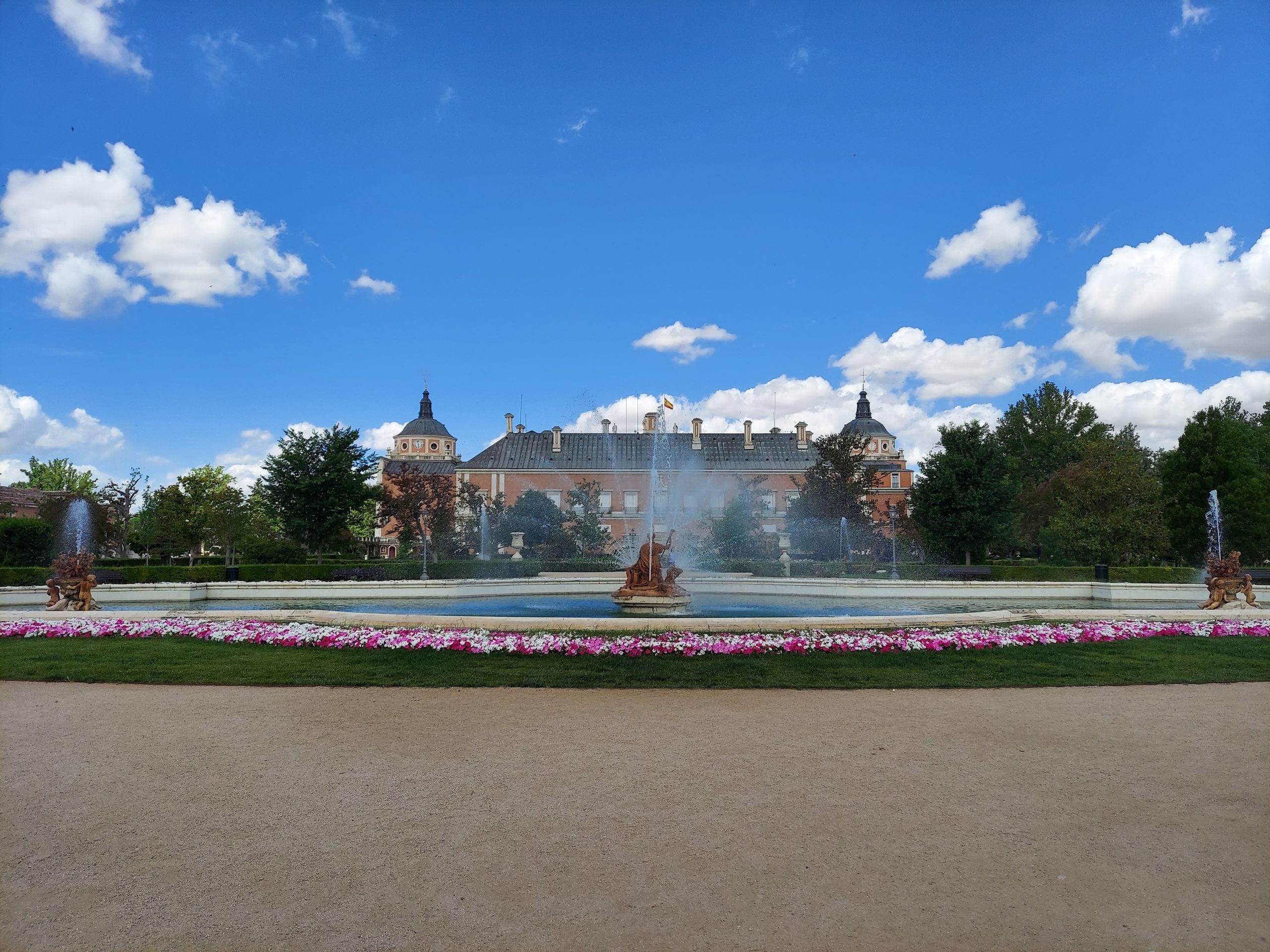
Beyond the Fountain of Hercules and Antaeus, you arrive at an oval fountain in the center of the garden, known as the Fountains of Ceres. It represents the Roman goddess of agriculture, crops and fertility. Located in the center of the pool, the figure of Ceres, appears holding in one hand the torch of creation and in the other, some poppy fruits.
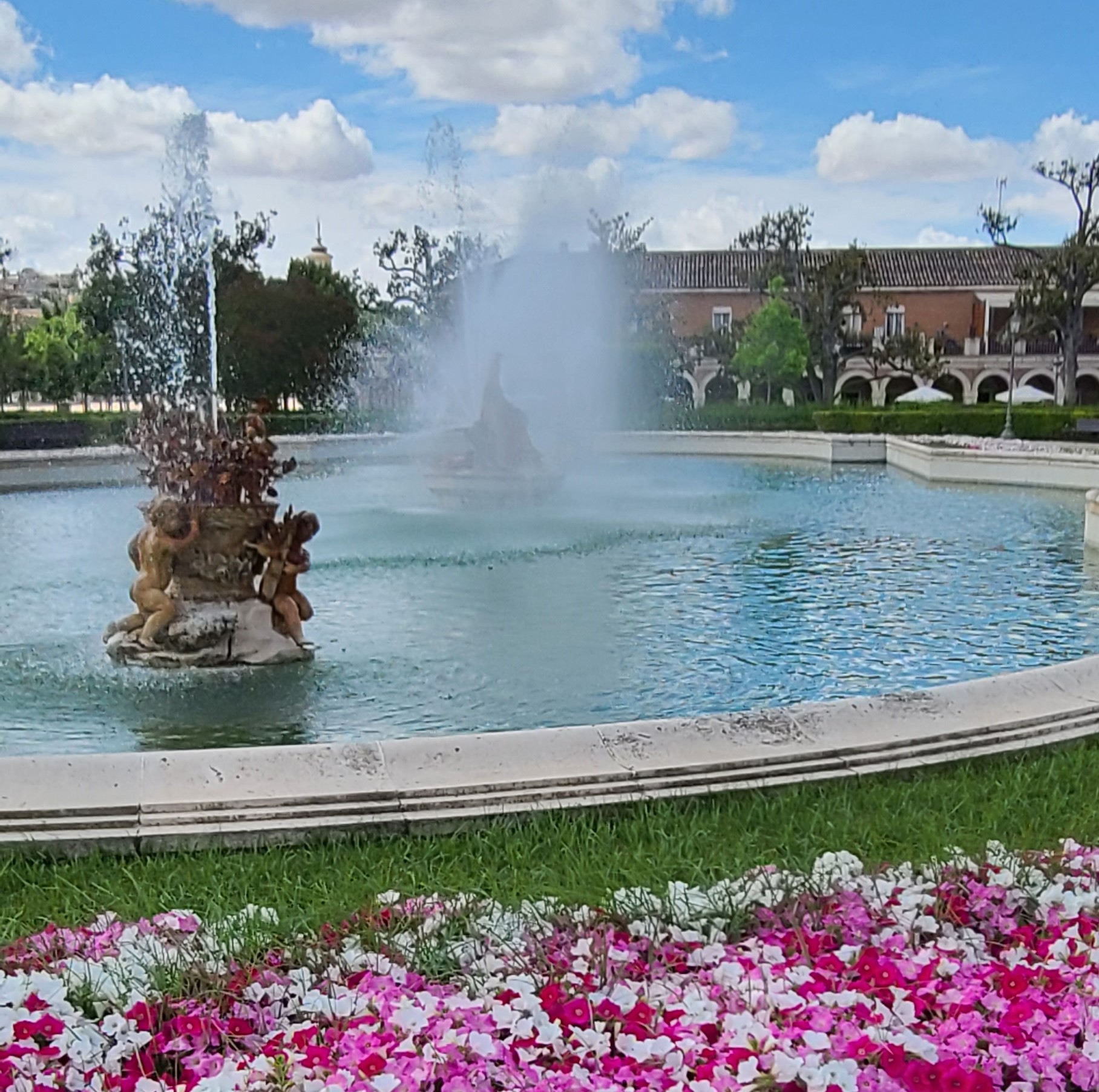
On either side of this central figure are two children playing, one with ears of wheat and the other embracing the horn of plenty. The central statue was moved to this oval pool (from the Prince’s gardens) in the early 20th century, when the Parterre garden was redone. The sculpture is attributed to Esteban Ágreda.
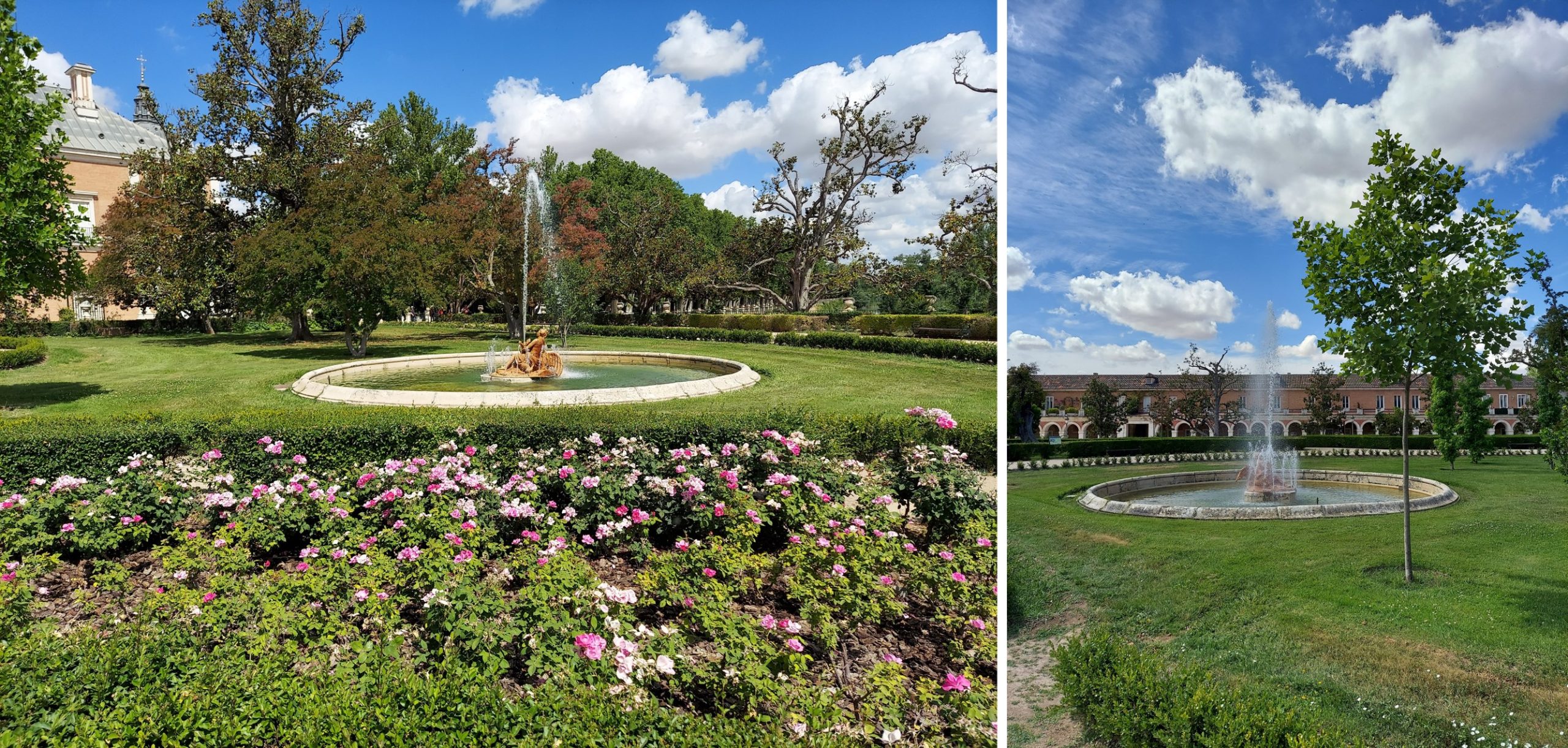
The Fountains of the Nereids are located, each one, at each end of the facade of the Royal Palace of Aranjuez that we observe from the Parterre. These two small fountains were made by Jacques Bosseau, who worked on the lead sculptures, and Joaquín Dumandre, who was in charge of their placement in 1745. The sculptures of both fountains represent sea nymphs that appear when the waters are calm. We also find in the garden several pedestals of beehive stone, which support vases made by Santiago Bonavía in 1762.

Next to the new palace ordered by Philip II, the construction of two palace gardens was planned, the King’s Garden and the Queen’s Garden.
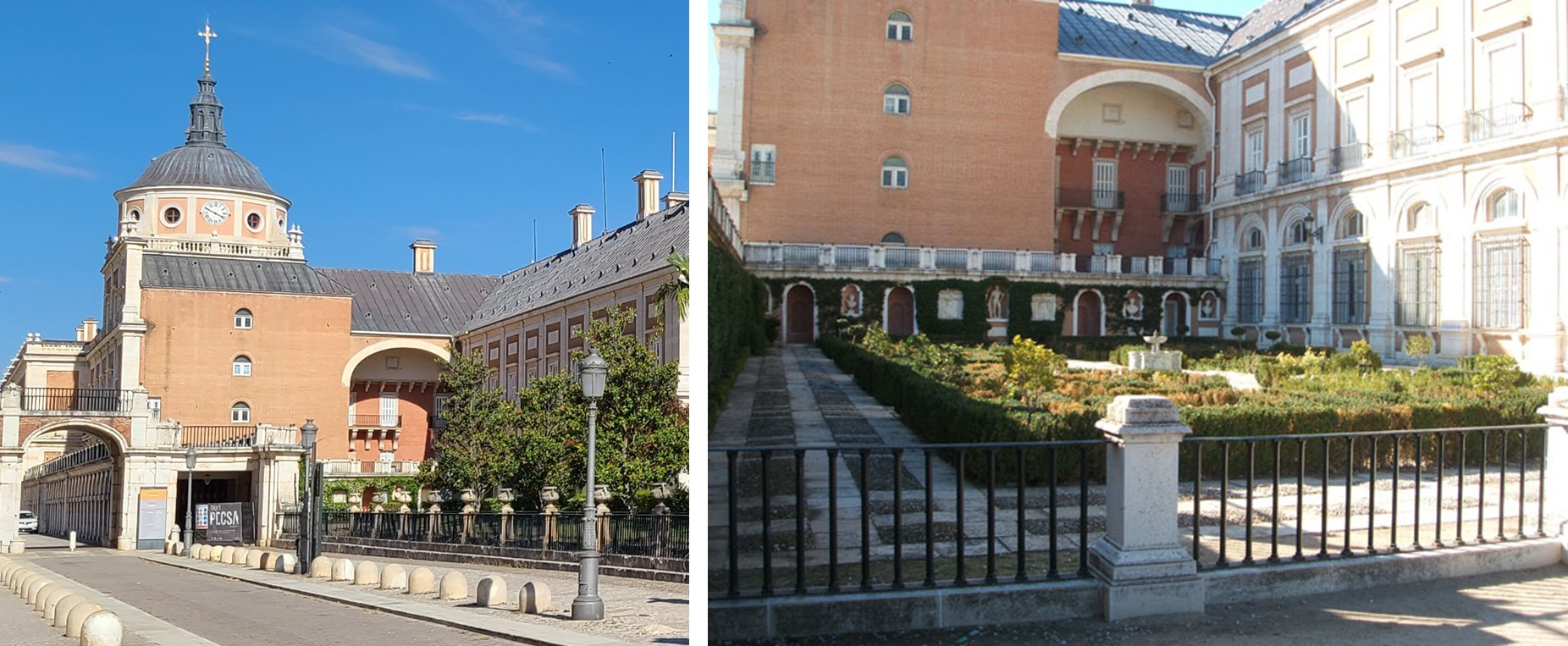
It was between 1577 and 1582, that Juan de Herrera carried out the construction of the King’s Garden, located on the left side of the eastern facade of the Royal Palace of Aranjuez. It is what is called a model of the “Closed Garden”, adorned with statues and a very clear Renaissance influence, usual in the Spanish Royal Palaces of the Habsburgs. In the center is a fountain of green jasper, work of the sculptor Roque Solario. Philip II was able to enjoy this garden for fifteen years.
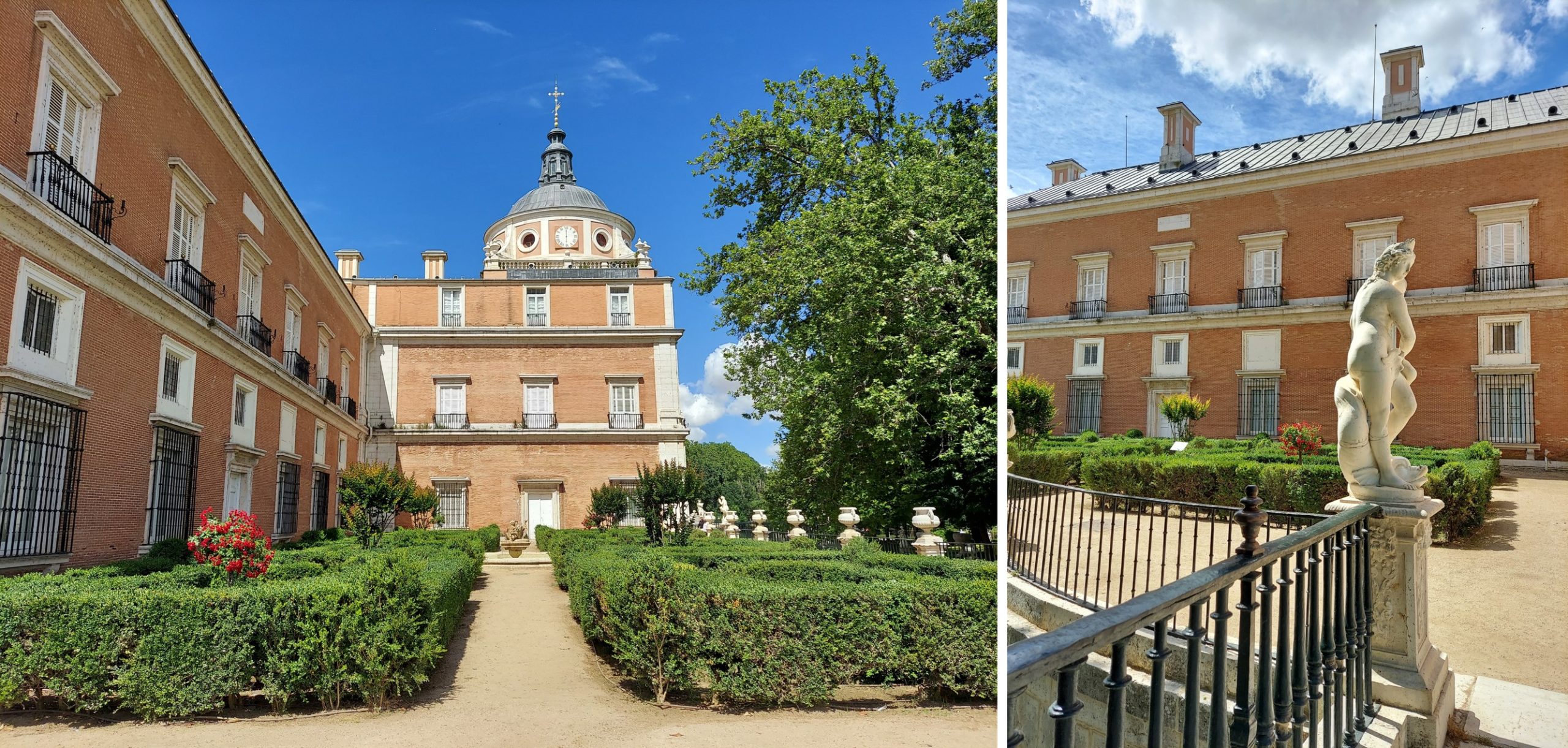
On the other hand, the Queen’s Garden is located between the Royal Palace of Aranjuez and the river. It was made by Mateo Torrijos in 1870, practically three centuries later, compared to the Jardín del Rey. In its central part is a fountain adorned with a sculpture of two children holding a fish.
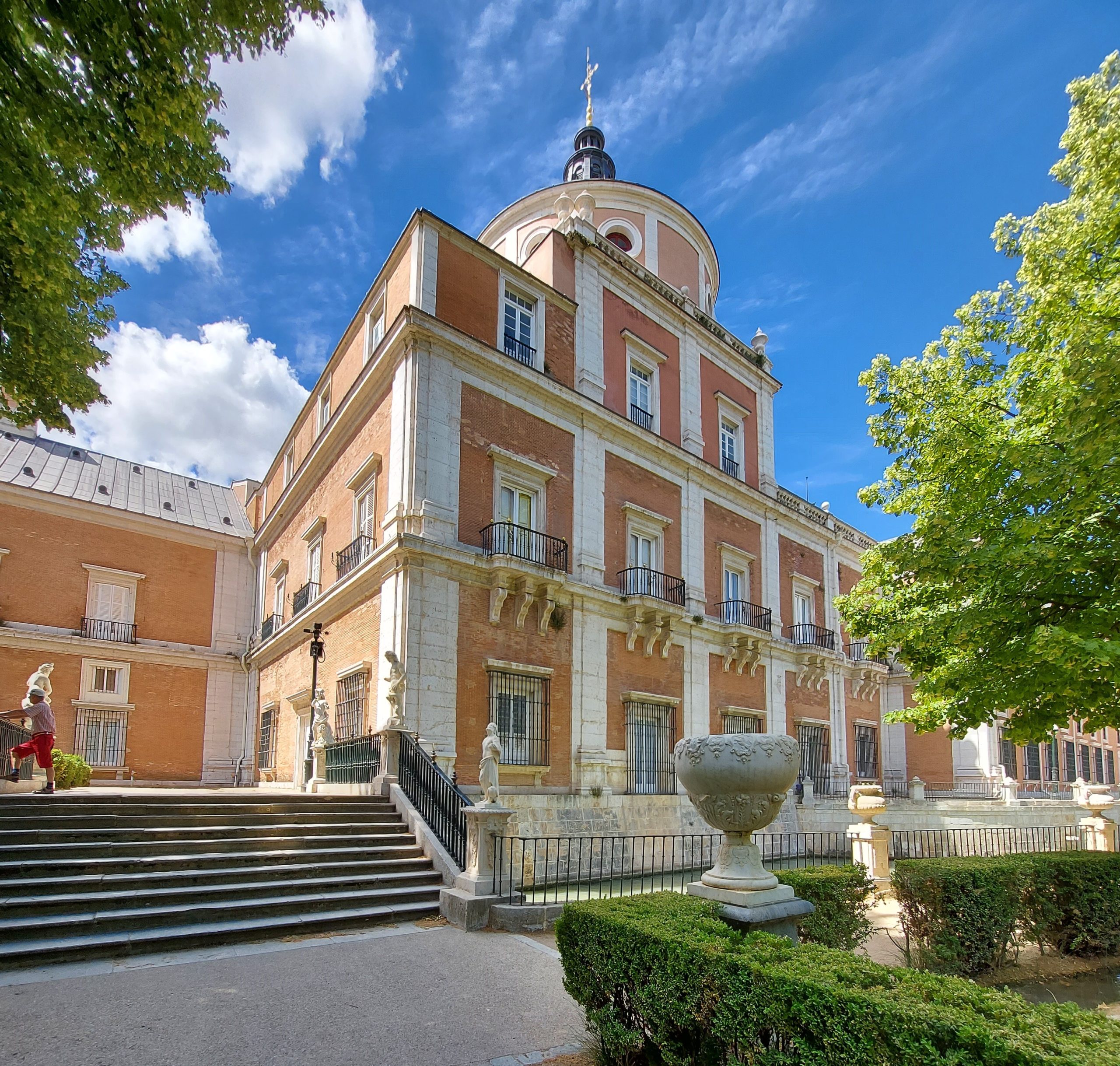
And it is precisely, the Garden of the Queen, the path that leads us to the third part of this tour, the Garden of the Island.
Resources:
https://es.wikipedia.org/wiki/Jard%C3%ADn_del_Parterre_(Aranjuez)
https://www.aranjuez.com/jard%C3%ADn-de-parterre.html
https://paisajelibre.com/aranjuez-parterre-y-jardin-del-rey/
https://www.misviajesysensaciones.com/2014/09/palacio-real-y-jardin-del-parterre-aranjuez.html
